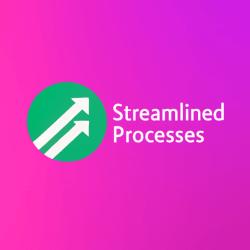For Marketing Automation Integration, see our main page here.
What Is Marketing Automation Integration?
Marketing Automation Integration connects your automation tools with other platforms, like CRM systems, email services, or lead databases. This allows marketing efforts to run smoothly across different tools. Instead of switching between platforms, everything’s connected in real time.
For example, when a user completes a form on your website, their information can automatically sync with your CRM, trigger a personalized welcome email, and notify your sales team—all without anyone lifting a finger. That’s the power of Marketing Automation Integration.
Why Integration Matters in Today’s Marketing Landscape
Today’s buyers expect instant responses and tailored experiences. Without proper integration, teams waste time copying data, missing leads, or sending mixed messages. Integration solves that by aligning systems, making marketing smarter and faster.
Moreover, integrated systems allow your campaigns to act on real-time data. For instance, a customer’s behavior on a website can instantly update their status in your segmentation lists. This allows for timely and relevant responses rather than generic batch emails.
Benefits of Marketing Automation Integration
When done right, Marketing Automation Integration unlocks significant advantages:
- Time Savings: Automated data flow reduces repetitive tasks.
- Improved Accuracy: Eliminate manual data entry and human errors.
- Personalization: Respond to user behavior in real time.
- Sales Alignment: Sync lead data with sales tools instantly.
- Scalability: Easily grow campaigns without adding overhead.
These benefits combined give companies a clear edge in competitive markets. According to a recent Forrester report, companies with fully integrated marketing systems saw a 10% faster revenue growth year-over-year.
Common Tools Used in Integration
There’s no shortage of platforms that support Marketing Automation Integration. The key is choosing tools that communicate seamlessly. Commonly integrated tools include:
- CRMs like Salesforce and HubSpot
- Email platforms such as Mailchimp and ActiveCampaign
- Web analytics tools like Google Analytics
- Social scheduling platforms such as Buffer or Hootsuite
- Ad networks like Facebook Ads and Google Ads
In the same vein, newer integrations are appearing between automation tools and AI-driven analytics platforms. This helps teams make smarter decisions, faster.
How to Approach Marketing Automation Integration
Jumping into integration without a clear strategy can backfire. Start by identifying where your data lives and flows.
- Audit Your Tools: Understand existing platforms and processes.
- Map the Data Flow: Define which information needs to sync across tools.
- Select Integration Software: Use middleware like Zapier, Make, or native integrations.
- Test and Validate: Ensure the data syncs correctly without duplication.
- Monitor and Optimize: Continuously review and fine-tune connections.
For instance, if you’re a SaaS company collecting user behavior data, integrating Google Analytics with your email automation tool can allow for hyper-targeted re-engagement campaigns.
Challenges in Marketing Automation Integration
It’s not always plug-and-play. There are real obstacles companies encounter, including:
- Data Silos: Fragmented systems hinder seamless data sharing.
- API Limitations: Not all platforms offer open or flexible APIs.
- Duplicate Records: Poor syncing can lead to messy databases.
- Security Risks: Improper configuration may expose sensitive data.
However, planning and using best practices helps mitigate these risks. In other words, taking time upfront saves time and trouble later.
Real-World Example: E-Commerce Success Story
A direct-to-consumer skincare company integrated Shopify with Klaviyo, Google Ads, and their custom CRM. As a result, abandoned cart emails and retargeting ads were fully automated. Their open rates improved by 35%, and cart recovery increased by 20% in 60 days. Most importantly, their team could focus on campaign creativity, not manual follow-ups.
This example illustrates how Marketing Automation Integration translates to direct ROI and customer satisfaction when used strategically.
Trends Shaping Marketing Automation Integration
As technology evolves, new trends open even more potential for integration:
- AI-Powered Triggers: Tools now predict user behavior and take action faster than before.
- No-Code Connectors: Platforms like Zapier allow marketers to automate without coding knowledge.
- Voice & Chatbot Integration: Automate responses through voice-powered or chatbot platforms.
- Predictive Segmentation: Tools group audiences by likelihood to convert, not just demographics.
Consequently, companies that embrace these technologies gain an edge by responding to customer needs with precision and speed.
Best Practices to Ensure Seamless Integration
To gain the full advantage of Marketing Automation Integration, follow these proven best practices:
- Clean Your Data: Standardize formats and remove duplicates beforehand.
- Define Clear Goals: Know what each integration aims to accomplish.
- Use Reliable APIs: Prioritize platforms known for strong connectivity.
- Ensure Team Training: Everyone involved should understand the workflow.
- Have a Recovery Plan: Know what to do if data flow breaks.
In the same vein, getting expert help—especially during initial setup—can reduce growing pains and ensure long-term success.
FAQ: Marketing Automation Integration
What’s the difference between “automation” and “integration”?
Automation involves creating workflows that run without manual input. Integration connects tools so they share data and power that automation.
Is Marketing Automation Integration only for large companies?
Not at all. Small businesses benefit just as much by saving time and delivering better customer experiences without needing large teams.
Can I integrate tools myself or do I need a developer?
It depends. No-code platforms let marketers build simple flows themselves. However, complex use cases might need developer support.
How long does setup usually take?
Basic integrations can be ready within a day. Complex systems may take a few weeks, depending on testing and adjustments.
Are AI tools involved in integration?
Yes, many integration workflows use AI to predict customer behavior, score leads, or choose the best timing for outreach.
The Human and AI Contribution
This article was created with the assistance of AI tools and reviewed by our team at Streamlined Processes LLC to ensure accuracy and relevance. AI supported research and draft organization, while our experts provided real-world examples and insights based on hands-on industry experience.
In conclusion, blending automation with thoughtful strategy is key to long-term marketing success. Integration is no longer optional—it’s essential.
Follow us on Facebook here.

